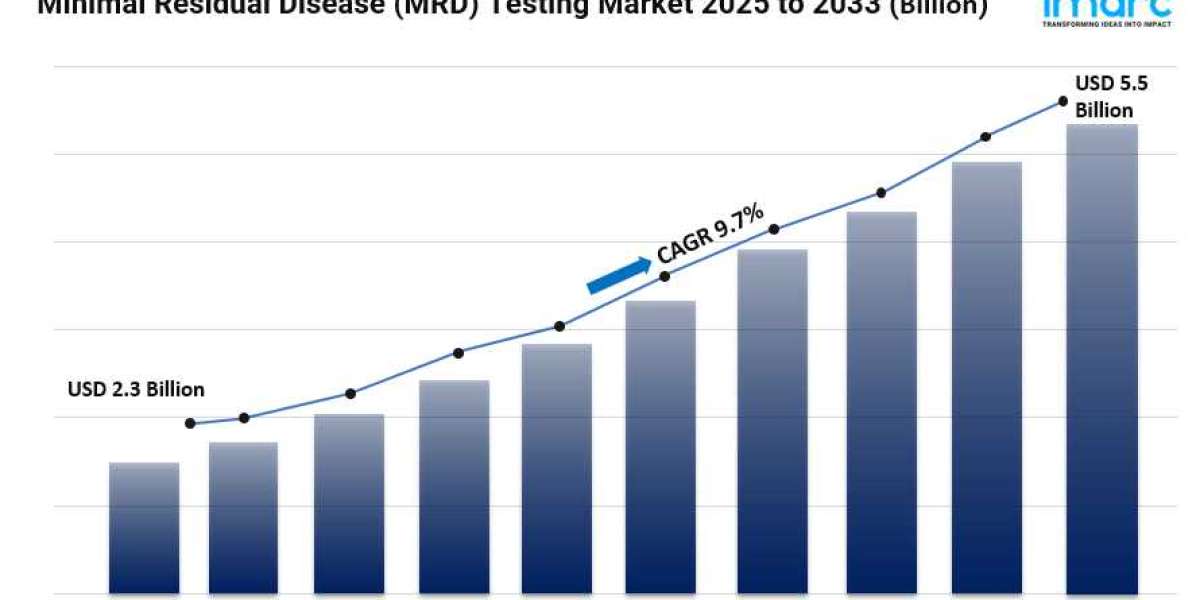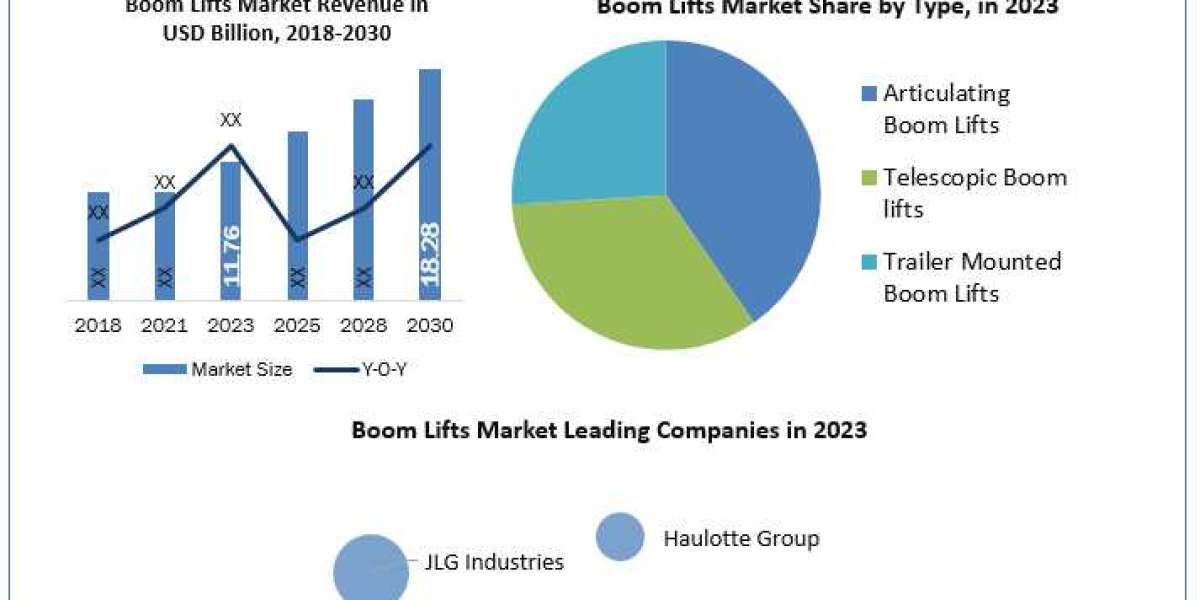IMARC Group, a leading market research company, has recently releases report titled “Minimal Residual Disease (MRD) Testing Market: Global Industry Trends, Share, Size, Growth, Opportunity and Forecast 2025-2033,” The study provides a detailed analysis of the industry, including the global minimal residual disease (MRD) testing market growth, share, size, trends, and forecast. The report also includes competitor and regional analysis and highlights the latest advancements in the market.
Report Highlights:
How big is the minimal residual disease (MRD) testing market?
The global minimal residual disease (MRD) testing market size reached USD 2.3 Billion in 2024. Looking forward, IMARC Group expects the market to reach USD 5.5 Billion by 2033, exhibiting a growth rate (CAGR) of 9.7% during 2025-2033.
Factors Affecting the Growth of the Minimal Residual Disease (MRD) Testing Industry:
- Rapid Technological Advancements in MRD Testing:
The development of highly sensitive and specific diagnostic tools, such as next-generation sequencing (NGS) and digital polymerase chain reaction (PCR), is acting as a growth-inducing factor. They enable the identification of minute levels of disease cells that were previously undetectable, allowing for more accurate monitoring and treatment decisions. In addition to this, the integration of bioinformatics and machine learning (ML) algorithms that enhance the precision of MRD tests, facilitating personalized medicine approaches, is bolstering the market growth. Additionally, continuous improvements in assay sensitivity and specificity that contribute to earlier detection of relapse thereby optimizing patient outcomes, is favoring the market growth.
- Increasing Prevalence of Hematological Malignancies:
The rising incidence of hematological malignancies, such as leukemia, lymphoma, and myeloma, is propelling the market growth. Moreover, the growing geriatric population and environmental factors that contribute to cancer prevalence, boosting the demand for precise diagnostic and monitoring tools, are fostering the market growth. MRD testing plays a vital role in assessing the effectiveness of treatment regimens and guiding subsequent therapeutic decisions. Along with this, the increasing adoption of MRD testing in clinical practice, reflecting its importance in improving survival rates and quality of life for patients with hematological cancers, is fueling the market growth. Additionally, the expanding body of clinical evidence supporting the prognostic value of MRD status in guiding treatment decisions is driving the market growth.
- Imposition of Regulatory Approvals and Reimbursement Policies:
The imposition of favorable regulatory frameworks that acknowledge the clinical utility of MRD testing, leading to the approval of several MRD assays, is stimulating the market growth. These approvals validate the clinical significance of MRD tests, encouraging their widespread adoption. Moreover, the introduction of reimbursement policies from healthcare payers, including insurance companies and government programs to facilitate patient access to MRD testing, is strengthening the market growth. Additionally, reimbursement support reduces the financial burden on patients and healthcare providers, promoting the integration of MRD tests into standard care protocols. Besides this, the rising collaborative efforts between regulatory authorities, industry stakeholders, and healthcare providers to streamline approval processes and establish comprehensive reimbursement frameworks are enhancing the market growth.
Request for a sample copy of this report: https://www.imarcgroup.com/minimal-residual-disease-testing-market/requestsample
Minimal Residual Disease (MRD) Testing Market Report Segmentation:
Breakup By Technology:
- Flow Cytometry
- Polymerase Chain Reaction (PCR)
- Next Generation Sequencing (NGS)
- Others
Polymerase chain reaction (PCR) represented the largest segment due to its high sensitivity, specificity, and established use in detecting low levels of disease cells.
Breakup By Application:
- Hematological Malignancy
- Leukemia
- Lymphoma
- Solid Tumors
Hematological malignancy accounted for the largest market share as MRD testing is crucial for monitoring treatment response and detecting early relapse in blood cancers.
Breakup By End User:
- Hospitals and Speciality Clinics
- Diagnostic Laboratories
- Academic and Research Institutes
- Others
Hospitals and speciality clinics represented the largest segment as they are primary centers for diagnosing, treating, and managing cancer patients, ensuring immediate access to advanced diagnostic tools like MRD tests.
Breakup By Region:
- North America (United States, Canada)
- Asia Pacific (China, Japan, India, South Korea, Australia, Indonesia, Others)
- Europe (Germany, France, United Kingdom, Italy, Spain, Russia, Others)
- Latin America (Brazil, Mexico, Others)
- Middle East and Africa
North America's dominance in the minimal residual disease (MRD) testing market is attributed to its advanced healthcare infrastructure, high adoption rate of innovative diagnostic technologies, and supportive regulatory environment.
Global Minimal Residual Disease (MRD) Testing Market Trends:
The growing integration of MRD testing in clinical trials and drug development processes is fueling the market growth. Pharmaceutical companies are incorporating MRD status as a key endpoint in clinical trials for new hematologic therapies. Additionally, the burgeoning expansion of MRD testing into solid tumors, as researchers explore the application of MRD detection techniques in cancers such as breast, lung, and colorectal cancer, is favoring the market growth. Apart from this, the development of liquid biopsy-based MRD tests, which offer a non-invasive alternative to traditional bone marrow biopsies, is contributing to the market growth.
Top Minimal Residual Disease (MRD) Testing Market Leaders:
The minimal residual disease (MRD) testing market research report outlines a detailed analysis of the competitive landscape, offering in-depth profiles of major companies.
Some of the key players in the market are:
- American Elements
- Anglo American Platinum Limited
- D.F. Goldsmith Chemical Metal Corp.
- Impala Platinum Holdings Limited
- JJ Materials Inc.
- Johnson Matthey PLC
- Norilsk Nickel
- Northam Platinum Holdings Limited
- Parekh Industries Ltd.
- Reade International Corp.
- Sharretts Plating Company
- Sibanye-Stillwater
Ask Analyst Browse full report with TOC List of Figures: https://www.imarcgroup.com/request?type=reportid=7036flag=C
If you require any specific information that is not covered currently within the scope of the report, we will provide the same as a part of the customization.
About Us:
IMARC Group is a global management consulting firm that helps the world’s most ambitious changemakers to create a lasting impact. The company provide a comprehensive suite of market entry and expansion services.
IMARC offerings include thorough market assessment, feasibility studies, company incorporation assistance, factory setup support, regulatory approvals and licensing navigation, branding, marketing and sales strategies, competitive landscape and benchmarking analyses, pricing and cost research, and procurement research.
Contact US:
IMARC Group
134 N 4th St. Brooklyn, NY 11249, USA
Email: sales@imarcgroup.com
Tel No:(D) +91 120 433 0800
United States: +1-631-791-1145














